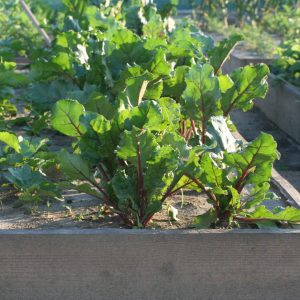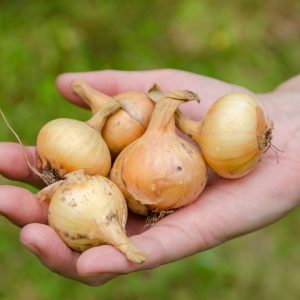Things to Consider Before Starting Your CACFP Site Garden
May 5, 2022

This is part 1 of a multi-part series on gardening in the CACFP. Community gardens, childcare gardens, school gardens and farm-to-table are increasingly popular in our community. And for good reason! When children garden, they’re known to eat more fruits and vegetables, have a better understanding of nutrition, improve science achievement, improve social skills, and improve their attitude on the environment. This segment is all about getting started. In future installations, we’ll talk about planting, maintenance, harvesting and keeping children engaged. Stay tuned!
Before getting started
Since gardens come in all shapes and sizes, demanding different skills and maintenance, it’s important take some time at the beginning to carefully consider what you want. Is this a cornerstone of your program, or more of an experiment? What’s the weather like where you are? How big is your staff, and who will be leading the project? How old are your participants? We hope this guide will lead you to a clear picture of what you want your garden to be.
Garden type
This is the physical structure of your garden. It will often dictate how much time is needed to prepare your garden each season, and it can influence the cost of materials and required staff time as well. Most importantly, the space you have allotted for your garden will influence the type of garden you select.
1. In-Ground
We’re guessing this is what came to mind when you imagined a garden at your CACFP site. This type of garden requires significant adult prep work for the initial installation, including tilling and soil testing (an often free or low-cost service at local ag extension offices). Once established, in-ground gardens become lower maintenance, requiring weeding and the addition of compost each year.
2. Raised Bed

A raised-bed garden is the halfway point between in-ground gardens and container gardens. The beds are typically made from concrete blocks or framed wood. Upcycling materials is sometimes an option, but providers must be careful to use materials that haven’t been sprayed or exposed to harmful pollutants. The frames are filled with at least 9 inches of quality soil. These beds encourage drainage and discourage weeds. They aren’t compacted, and thus don’t require tilling. However, raised beds are costlier to create at the beginning, and will continue to be costly each time expansion is desired.
3. Container Garden
Container gardens are a fantastic solution for sites that have little outdoor space, poor soil quality or are surrounded by cement. They can be tailored to fit the needs of your program and made modular to divide responsibility amongst different groups at a site. Planters can be placed on carts and can
be moved as needed. Unlike with raised beds or in-ground gardening, careful consideration must be given to the container each plant is grown in. For example, plants that mature to be large (like tomatoes) must be planted in large containers, even though they start just as tiny as others. Herbs and other smaller plants are happy in window boxes and tabletop containers. Purchasing containers can be costly, and you should consider this option carefully.
4. Indoor Garden
Indoor gardens are a solution for sites in locations with long winters or extremely limited or unsafe outdoor spaces. Use bright windows with southern and western exposure or indoor grow lights to create proper growing conditions. Indoor gardens can reduce the amount of space for inside learning and programming, and also may require special equipment (such as grow lights).
What you’ll grow
For some, this is the most fun part of beginning a garden. Seed catalogs, blogs about starting a garden (hi!) and garden centers have endless options of produce on parade. From conventional to heirloom, how do you decide?
1. When are your first and last frost dates?
Seed packets will indicate planting based on first and last frost (i.e. “plant directly outside three weeks before last frost”). First and last frost dates are different for every region, and you may wish to plan your garden programming around these dates.
2. What produce is available in your local grocery store?

Hope for the best, but plan for the worst. If a much-anticipated harvest is a bust or simply doesn’t produce enough for each participant to taste it, you’ll want to be able to supplement that item from your local grocery store.
3. How will you incorporate variety?
Some elements of variety are obvious: fruits and vegetables, sweet and heat. We want to challenge you a little more: Can you plant produce to harvest all parts of the plant? Harvest broccoli so your participants can eat the flower; grow peppers and melons so your participants can eat the fruit; try turnips and carrots so your participants can eat the roots. Consider growing a rainbow of color as well to keep everyone visually stimulated. Lastly, take care to choose crops that have harvest times spread throughout the growing season. Children will maintain interest if they see the fruits of their labor more frequently.
Maintenance & time
Building your garden and the planting seeds is only the beginning. Gardens require daily and weekly maintenance. The garden type you selected will dictate how much maintenance is required to some degree, but there are other considerations.
1. Scale and scope

We know that this one seems obvious but hear us out. Instead of asking yourself how big your garden should be, ask what you want your garden to do. Is the purpose of your garden so that children can taste different fruits and vegetables, or is the purpose of your garden to supply the kitchen with ingredients for meals? Identify the desired outcome of your garden to work backwards and establish how big it should be. Bigger gardens will need more work in terms of weeding, watering, and food-safe pest management.
2. Participants
What role will participants play? Depending on the age of the children at your site, this garden could be the sole responsibility of the staff. Identifying who will be responsible for the garden and when they will be able to maintain it can help set appropriate time management and maintenance expectations. In some cases, parents or community volunteers may step in to assist. Build those relationships prior to building the garden.
That’s all for now! Next up we’ll talk about starting seeds and planting transplants. For an in-depth gardening guide, take a look at this resource from Team Nutrition.
